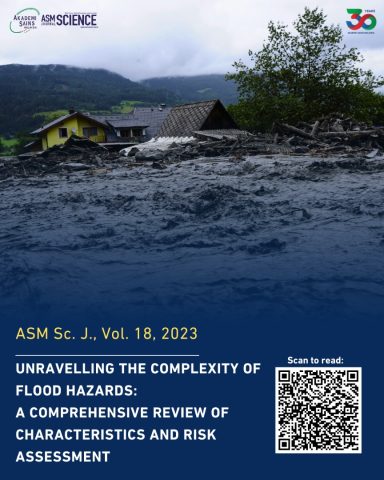
ASM Marks 30 Years at Annual General Meeting
May 21, 2025
ASM Podcast Ep.51 – Sembang Raya (Eid Chit-Chat)
May 21, 2025Floods are among the most common natural disasters, yet their impact can vary greatly depending on several factors. Understanding the characteristics of flood hazards is important because it helps determine the potential level of risk and loss. However, what defines a “hazard” can differ from one study to another, especially when it comes to floods.
This paper reviews past research to explore how flood hazards are defined and how these definitions influence the assessment of risk. Flood severity is often described using characteristics such as water depth, flow velocity, duration, discharge, force, and intensity. Based on these features, hazards are typically grouped into three or four levels—low, medium, high, or in some cases, extreme. For example, floodwaters less than half a meter deep are usually considered low hazard, while depths above 1.5 metres pose a high hazard.
Frequency also plays a role: floods occurring fewer than six times a year are usually low hazard, while those happening more than 11 times annually are deemed extreme. The higher the hazard level in a given area, the greater the risk of loss to people, property, and infrastructure.
By reviewing and synthesising existing studies, this paper highlights the importance of understanding flood characteristics as a foundation for assessing risk. Such insights can guide more effective planning, preparedness, and mitigation efforts in flood-prone regions.
Visit the ASM Science Journal to read the full article.

